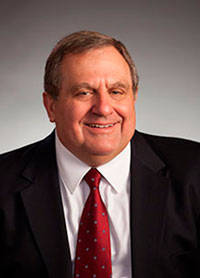It isn’t often we hear good news from Hanford, but the Deptartment of Energy recently announced nation’s first commercial advanced nuclear power reactor would be developed on the massive federal reservation north of Richland.
Much of the news from Hanford focuses on radioactive waste cleanup and storing it safely. It has accumulated since the 1940s when nuclear reactors enriched uranium for nuclear weapons.
While that tedious work will continue for years to come, Hanford scientists have a new mission—-develop smaller and safer nuclear reactors which will replace traditional nuclear power plants.
“Their smaller size and ability to quickly ramp up and down makes them a perfect complement to intermittent renewable resources, such as wind and solar, that rely on weather conditions to generate,“ the TriCities Herald reported.
If Washington is to substantially reduce CO2 emissions from coal and natural gas power plants, it will need nuclear. Currently, our country’s nuclear plants provide 55 percent of the carbon-free electricity, while hydro, wind, solar and geothermal account for the rest.
While wind and solar are ramping up nationally, Texans learned what life was like under a grid which depends too heavily on renewables. “An electricity grid that relies on renewables also needs nuclear or coal power,” the Wall Street Journal editorialized.
In early February, Texas, the nation’s leading wind energy producer, was hit with a historic blast of frigid temperatures. Wind turbines froze and wind’s share of the state’s electricity fell from 42 to 8 percent between of Feb. 7-11, according to the Energy Information Administration (EIA).
Suddenly, many Texans not only lost electricity, but natural gas demand soared beyond supplies. Coal power plants, which are required to a keep 90-day coal supply on hand, stepped in to fill the gap.
Even with fossil fuel plants running all out, Texas utilities implemented a series of mandatory short power outages to keep the system from total collapse.
The lesson is wind and solar need back up from reliable sources which generate electricity consistently. If the emphasis is on carbon-fee emissions, nuclear has to be part of the equation. Meanwhile, it would be wise to consider increasing research on cleaner coal and natural gas.
New advanced nuclear power is needed. Older nuclear plants, such as the Columbia Generating Station on the Hanford Reservation near Richland, will be retired in coming decades. CGS, which has operated since 1984, produces 1,207 megawatts, enough electricity to power a city the size of Seattle and its suburbs.
Wind projects are expansive and getting harder to build. For example, Scout Clean Energy is proposing a 112-square-mile clean energy production site located south and west of the TriCities. Scout’s wind turbines would stretch along the Horse Heaven Hills from south of Finley to south of Benton City.
The visual impact and height of the wind turbines have raised objections with 150 of the 244 standing up to 670 ft. tall which is higher than Seattle’s Space Needle (605 ft.). According to reports in the TriCities Herald, the site would generate electricity only 30 percent of the time whereas similar sites in the Midwest generate power half the time.
Hanford is the ideal location for the testing advanced nuclear. It has the a reservoir of talented people and is surrounded by a concentration of operating solar, wind, hydro, natural gas and nuclear power production facilities. Thankfully, the federal government is funding advanced nuclear and partnerships are forming for research and development.
Carbon free energy emissions are important, but as we learned from the Texas winter blast, wind and solar need back up from nuclear, hydro, natural gas and even coal.
Don C. Brunell is a business analyst, writer and columnist. He retired as president of the Association of Washington Business, the state’s oldest and largest business organization, and now lives in Vancouver. He can be contacted at theBrunells@msn.com.


